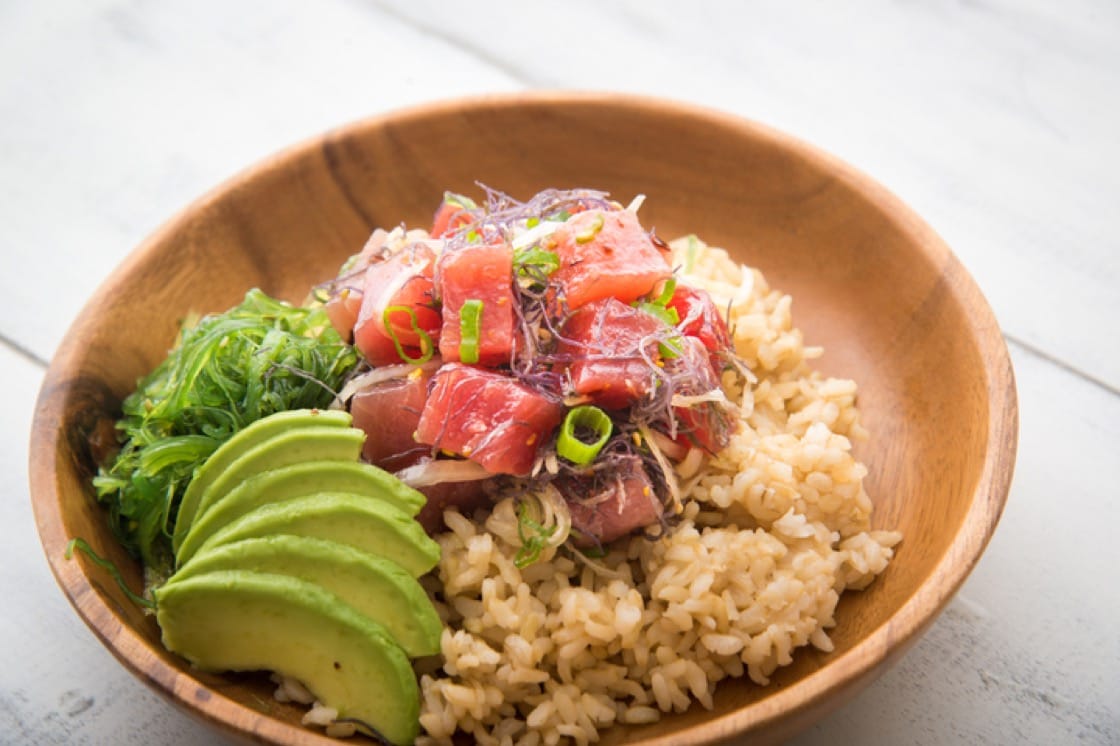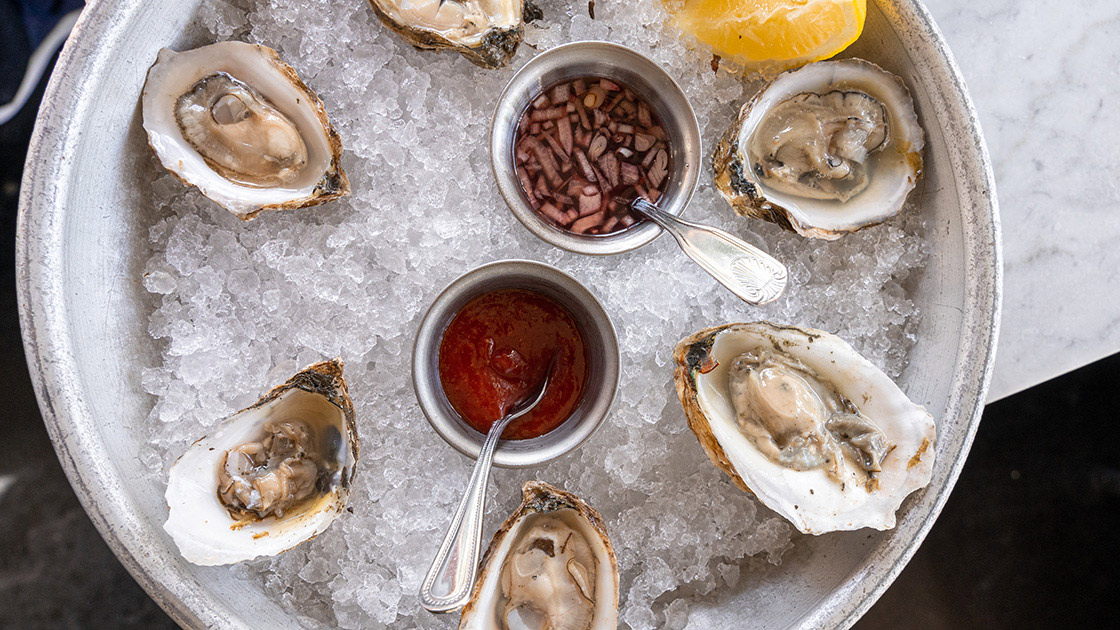First things first, it sounds like “Poh-keh”—not poki, not poke. Speaking of which, here’s a crash course to the Hawaiian language: pronounce every syllable of every word. For example, Route 63, also known as “Likelike Highway,” is pronounced lee-keh-lee-keh. Poke is a two-syllable word and simply means “cut into chunks” in Hawaiian.
Now, before we learn more about the classic Hawaiian dish, say "Humuhumunukunukuapua’a"—that’s the state fish of Hawaii.
Back to the matter at hand, here are six things you need to know about your favorite lunch bowl.
1. Poke was originally made with small Hawaiian reef fish.
Poke is rooted in the days when native Hawaiian fishermen would slice up smaller reef fish and serve them raw, seasoned with whatever was on hand—usually condiments such as sea salt, candlenuts, seaweed and limu, a kind of brown algae.

2. Poke served with salmon is inauthentic.
With the arrival of Japanese workers in the late 1800s and the advent of longline fleets plying the deep sea in the Pacific, the predominant poke fish shifted to ahi tuna. Today, though salmon seems to be the most popular, the classic poke is still raw ahi tuna or cured octopus, known as he’e in the Aloha State.
3. People get really passionate about poke.
Even with the proliferation of poke shops all over the world, you might still have heard Hawaiians sigh that they can’t satisfy their craving for real poke. For Pili Group chef Mark Noguchi, adding the accent over the "e" is equivalent to "cultural slander," and has said as much in a viral article, lambasting the misrepresentation of Hawaiian culture and more worryingly, the negative environmental impact of turning a finite resource like ahi tuna into a chain restaurant. Which brings us to our next point:
4. Traditional poke doesn’t have pineapple and is not very Instagrammable.
In the last few years, poke shops have offered a myriad of additives; the trend doesn’t seem to be fizzling out anytime soon. Spurring the movement is that poke bowls are inherently social media-worthy with their colorful toppings and fit right in with the clean-eating movement. You pick your raw protein, condiments and sauce, and your poke is tossed to order and then served over rice, right?
But real Hawaiian poke though, really isn’t very Instagrammable. In Hawaii, poke is a supermarket staple—an entire counter can be found with trays filled with already-marinated raw fish in flavors like shoyu, limu, or Hawaiian-style poke with chopped kukui nuts or spicy ahi. These murky-looking chunks are sold by weight and then scooped unceremoniously into plastic deli containers. Not pretty, but certainly scrumptious.

5. Get the real deal at the stall that started it all in Hong Kong: Pololi.
Pololi was one of the first poke shops to hit the Hong Kong food scene in 2014 and has since opened another outpost in Singapore. Although you can get poke at many other spots in town, you probably still want to hit up Pololi for its delicious rendition of the pre-marinated fish in more than 15 flavors like spicy tuna, wasabi mayo and yuzu salmon.

6. Fun fact: poke can be easily made at home.
Indeed, making shoyu ahi poke doesn’t require a fancy recipe: Get your hands on 500 grams of sashimi-grade tuna and cut it into bite-sized cubes. In a bowl, mix together 3 tablespoons of soy sauce, a tablespoon of oyster sauce, a drizzle of sesame oil, a teaspoon of minced garlic, a handful of chopped green onions, and whatever other condiments you feel like. Whisk it all together and marinate the tuna cubes in it for an hour in the fridge, and voila! Fresh, delicious poke that you can serve over rice with some slices of avocado for good measure.



















